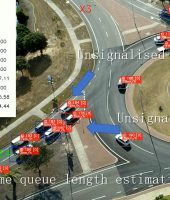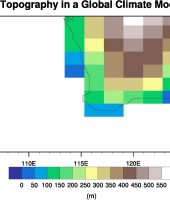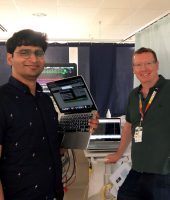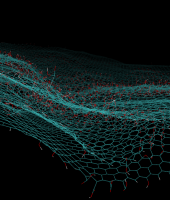AI learning helps save sight
Professor Yogesan Kanagasingam is Director of the CSIRO Australian e-Health Research Centre in WA. With Pawsey Supercomputing Centre’s Zeus system, Professor Kanagasingam, and his team, including Ms Maryam Mehdizadeh, and Professor Xiao, developed an artificial intelligence program called Dr Grader to allow GPs and primary care providers to detect diabetic retinopathy simply by taking a photo of a patient’s eye.
Diabetic retinopathy is a condition where blood vessels in the back of the eye begin to leak or bleed. As the condition worsens, the leakage damages a patient’s sight. If it goes untreated long enough, diabetic retinopathy can lead to irreversible blindness.
Anyone with diabetes is at risk of diabetic retinopathy; it is the world’s leading cause of vision loss. Diabetes affects over 1.2million Australians, with one third showing signs of diabetic retinopathy. Like many health issues, if it’s caught early it can be treated and diabetics are encouraged to take yearly eye exams.
The Challenge
Diabetic retinopathy cannot be diagnosed by your GP and requires visits to an ophthalmologist. Professor Kanagasingam says many patients turn away from ophthalmologist visits because of the long waiting lists and high cost. Patients put off these checks until their vision begins to deteriorate. Unfortunately, at this point diabetic retinopathy is already in its advanced stages and treatment becomes much more difficult.
Instead, Professor Kanagasingam and his team developed Dr Grader as a simpler way to detect diabetic retinopathy that could be performed by GPs.
“There are a limited number of ophthalmologists available; they need to screen a large number of patients. Usually diabetics have to go to a GP as a first point of contact, so that’s where AI can make a big difference,” said Professor Kanagasingam.
GPs will be able to take an image of a patient’s eye. Then, Dr Grader analyses the image to detect any signs of diabetic retinopathy. This detection system will save many patients a trip to the ophthalmologist and encourage them to get their eyes tested more regularly.
The Solution
Professor Kanagasingam and his team trained Dr Grader’s AI with deep learning techniques. Deep learning is a form of machine learning for computer programs, inspired by the human brain. The program is trained to recognise diabetic retinopathy symptoms by giving it a large image data set of affected eyes.
Training the program requires a large amount of processing power, which is why Professor Kanagasingam needed to work with Pawsey Supercomputing Centre.
“We can use the Pawsey systems to run these advanced learning techniques in a very short time. Timing is very important to process the images as we’re looking at about 15-20 Megabytes per image.”
Dr Grader needs to do more than just recognise diabetic retinopathy, however. It also needs to be easy to use for busy GPs. Professor Kanagasingam designed it to be fully integrative with GP medical databases and include real-time image quality checking.
“We can’t ask the patient to come back again if the image is no good, so we’ve included an AI quality control system which can check the image and let screeners know when they have to retake the photo. Now GPs can push the button, take the photo and everything is recorded, read and graded automatically.”
Outcome
Dr Grader has already run a successful clinical trial at GP Superclinic @ Midland Railway Workshops in 2017 and 2018. There, Dr Grader successfully tested 291 patients for diabetic retinopathy. It is now being rolled out to 30 more GP clinics in Singapore and there are plans to implement Dr Grader at major hospitals in WA.
“A major hospital may have 2000-3000 diabetes patients they scan annually. 90% of these patients are normal and test negatively with an ophthalmologist. With Dr Grader we can reduce strain on hospital resources. We’re looking at setting up a server to process these hospital images now,” says Professor Kanagasingam.
The Dr Grader technology has also been licenced by ophthalmology diagnostic imaging company, TeleMedC and is being rolled out in Singapore, Malaysia and South Asia. Its use is currently limited in Australia, but the technology is becoming cheaper and more portable. Soon, this AI developed with Pawsey supercomputers may become a regular piece of equipment in every GP clinic, helping thousands of diabetes patients keep their sight.
Project Leader.

A scan of a retina showing signs of diabetic retinopathy.
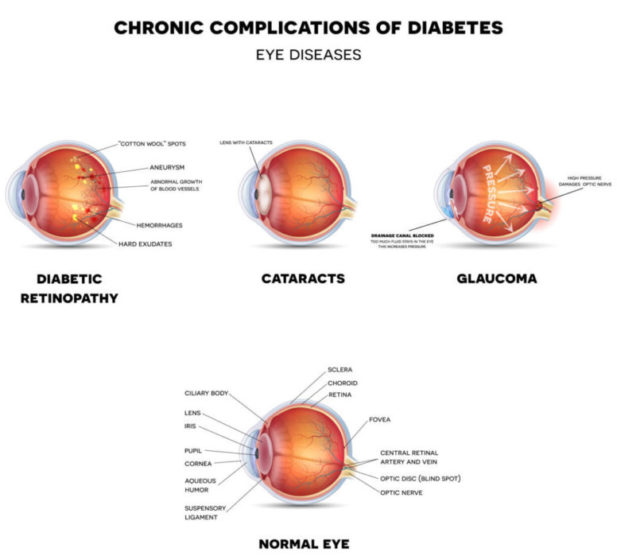
Diabetic Eye Diseases. Diabetic retinopathy cataract and glaucoma. At the bottom line healthy eye detailed anatomy.
